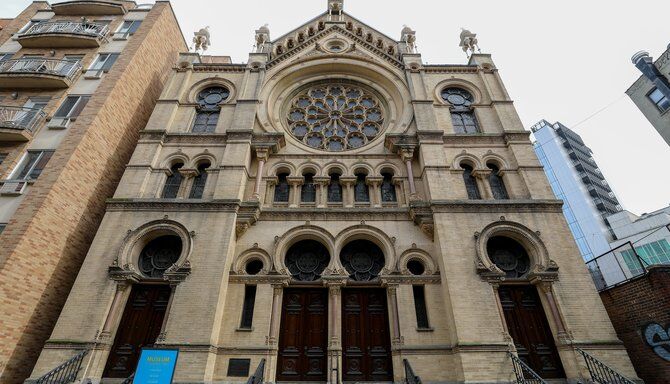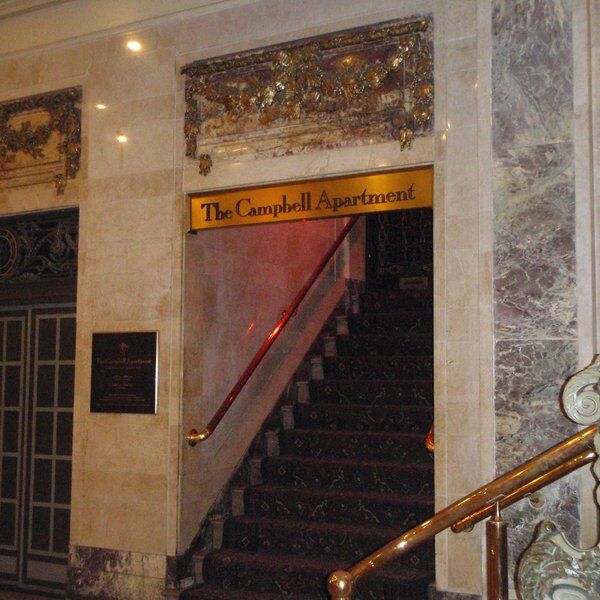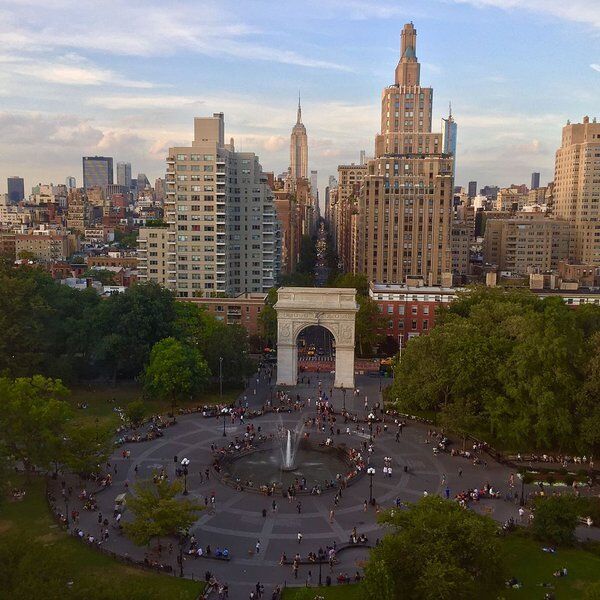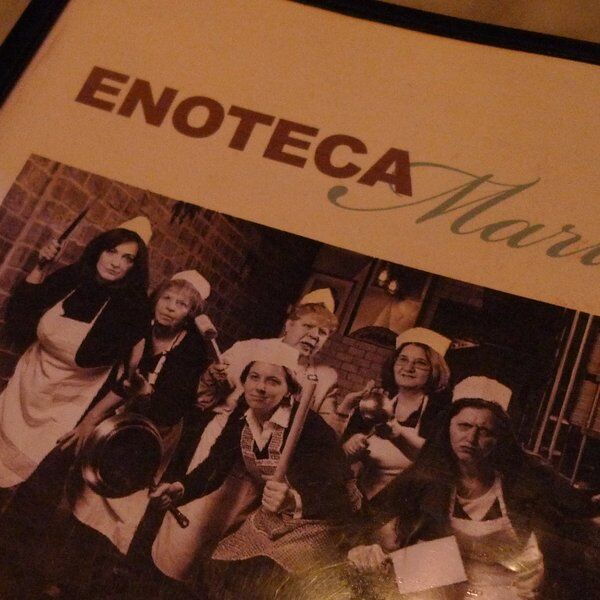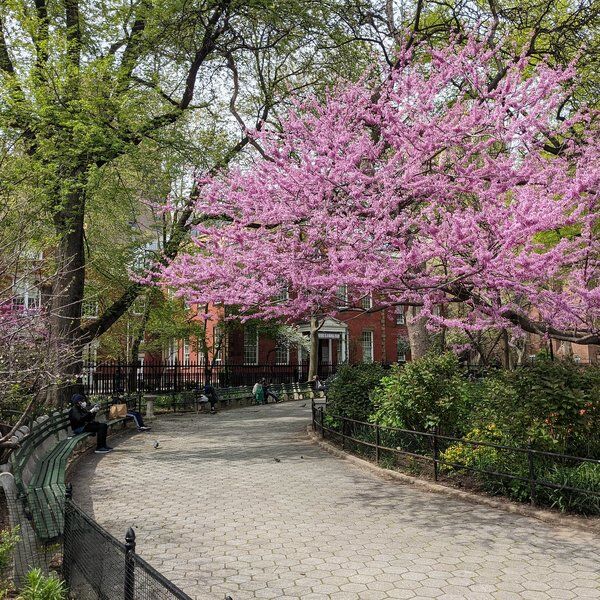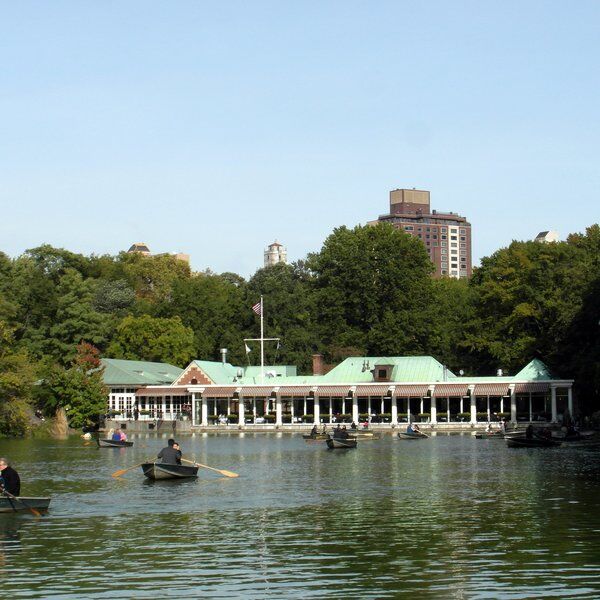Discover the Museum at Eldridge Street
The Museum at Eldridge Street is situated in the beautifully restored Eldridge Street Synagogue, which was built in 1887 as one of the first grand synagogues for Eastern European Jewish immigrants in the United States.
Unlike earlier synagogues that were adapted from smaller, multi-purpose buildings, the Eldridge Street Synagogue was purpose-built as a grand house of worship, reflecting the aspirations of a growing immigrant community. The synagogue’s architecture combines Moorish, Gothic, and Romanesque styles, which made it a grand addition to the Lower East Side.
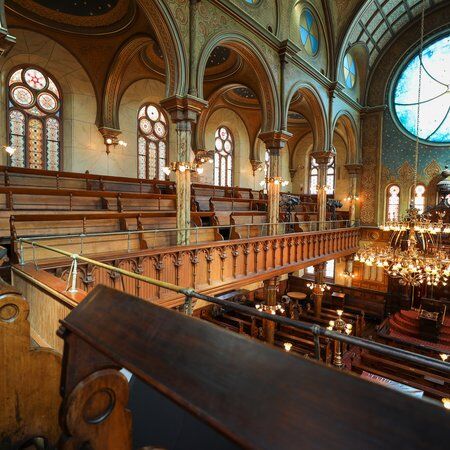
The Eldridge Street Synagogue
Jewish Life in the Late 19th Century
During the late 19th century, the Lower East Side was home to one of the largest Jewish communities in the world, with the area becoming densely populated by Eastern European Jewish immigrants. By 1890, the community included merchants, artisans, clerks, laborers, and more, all united by a shared faith and commitment to preserving their cultural and religious identity in a new world.
The Eldridge Street Synagogue stood as the community’s spiritual center, where thousands gathered for Sabbath services, festivals, and community events. Renowned cantors were hired to lead services, and the synagogue quickly became known for its beautiful liturgy and inspiring sermons. In 1918, the congregation appointed its first full-time rabbi, marking a period of significant growth and religious expression.
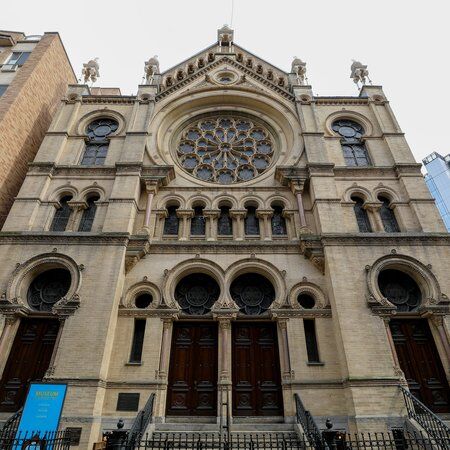
Creating the Museum at Eldridge Street
Synagogue Decline
The Jewish population of the Lower East Side began to shrink in the 1920s, partly due to new immigration restrictions and a shift as families moved to outer boroughs and other parts of New York. This exodus led to a decrease in the synagogue’s congregation, and by the 1940s, the once-thriving sanctuary was forced to close its upper level, with remaining worshippers relocating to a smaller chapel in the basement. Over time, the majestic sanctuary fell into disrepair. It became hidden away as a quiet reminder of a bygone era.
Rediscovery of the Synagogue
By the early 1980s, the Eldridge Street Synagogue—a symbol of New York’s rich immigrant history—faced severe neglect. Roberta Brandes Gratz, an accomplished preservationist, recognized its value as an architectural and cultural landmark. When she first entered the building, the interior was blanketed in dust, plaster was falling from the walls, and the stained-glass windows were heavily warped. Pigeons roosted in the balconies, adding to the decay.

The Eldridge Street Project
Realizing that immediate action was needed to prevent the structure from collapse, Gratz founded the Eldridge Street Project in 1986, a precursor to the Museum at Eldridge Street, to stabilize and eventually restore the synagogue.
The Eldridge Street Project was fueled by a grassroots movement of volunteers and supporters across the country. Over 18,000 people contributed to the restoration, with many local New Yorkers dedicating their time to “Clean and Shine” days. These early efforts involved polishing pews, cleaning dust-laden surfaces, and reviving the sanctuary’s original grandeur.
The Restoration Process
The restoration team aimed to tell the story of the building’s evolution. Rather than returning the sanctuary to its exact 1887 state, preservationists highlighted the architectural changes that had occurred over the decades instead.
This approach allowed visitors to see the building’s original details—such as the hand-painted designs on the walls and intricate stained-glass work—alongside newer elements. Original gas-lit chandeliers were rewired, for instance, while worn grooves in the floorboards served as a subtle reminder of the countless congregants who left their mark on the space.
A National Landmark
In recognition of its historical significance, the Eldridge Street Synagogue was designated a National Historic Landmark in 1996. This acknowledgment from the U.S. Department of the Interior, the New York State Office of Parks, and the City of New York underscored the building’s importance.
After nearly two decades of dedicated work, the full, $20 million restoration was completed in December 2007, transforming the building into the Museum at Eldridge Street—a cultural and heritage center that celebrates the legacy of Jewish immigrants in NYC.
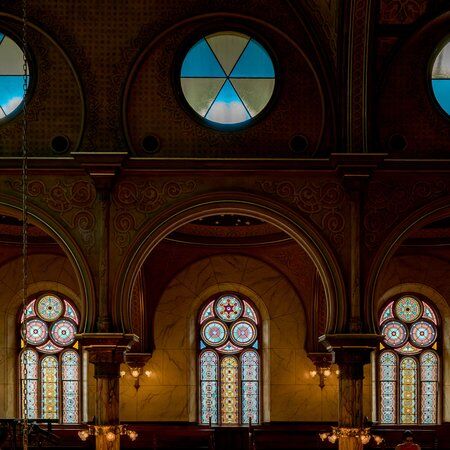
The Museum at Eldridge Street Today: A New Mission
Today, the Museum at Eldridge Street has an array of rotating exhibits, public programs, and tours relevant to the Jewish community. Interactive digital kiosks share the journey of Jewish immigrants, while permanent exhibitions feature artifacts from local businesses and maps tracing the congregational history.
Rotating displays delve into diverse themes, from Jewish folk art and synagogue architecture to the lives of Jewish-Chinese communities, expanding the museum’s mission beyond Jewish history.
Programs for children, holiday tours, and guided tours explore the buildings architectural wonders, including two new elements that were introduced post-restoration:
- The Stained Glass Window: In 2010, a new stained glass window by artist Kiki Smith and architect Deborah Gans introduced a contemporary layer to the synagogue’s aesthetic.
- Mosaic Floor: In 2024, artist Mark Podwal added a mosaic floor to the vestibule outside the Main Sanctuary, which portrays the 12 zodiac signs each paired with a corresponding Hebrew letter for its month. Created by Italian artisans at Progetto Arte Poli, this mosaic interweaves Jewish and Babylonian symbolism, including a Capricorn sea goat holding a Hanukkah menorah.
The Museum at Eldridge Street also hosts events, which brings Jewish and Lower East Side traditions to life through music, storytelling, and culinary experiences. For example, the annual “Egg Rolls, Egg Creams, and Empanadas” festival celebrates the neighborhood’s multiculturalism with traditional food, music, and art workshops.
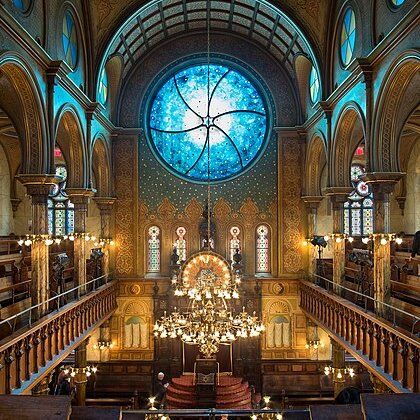
Highlights of the Museum at Eldridge Street
Built in the Moorish Revival style with Gothic and Romanesque elements, the synagogue was designed by architects Peter and Francis William Herter. The 53 by 79-foot structure, constructed in 1887, originally contrasted starkly with the surrounding tenement buildings, elevating its status as a local landmark.
The front-facing exterior features a large rose window, inspired by Gothic churches yet distinctly Jewish in symbolism, with a Star of David at its center. It includes roundels representing the Twelve Tribes of Israel. There are also unique architectural symbols, arches and decorative terracotta details covering the sanctuary’s three story exterior, which reaches a vaulted ceiling at 70 feet.
Inside, the sanctuary’s Orthodox customs are evident as the main floor was used for men’s seating, while the women’s section is located in a three-sided balcony, now the Use and Jeffrey Wilks Gallery. However, its raked design and open balustrades, allowing unobstructed views, were rare among Orthodox synagogues of the time.
Natural light fills the sanctuary through numerous stained-glass windows, complemented by an elaborate 75-bulb chandelier and brass fixtures that create a warm, inviting atmosphere. Painted patterns and motifs, including stars and leaves against a blue background, add depth and character, all while respecting Orthodox prohibitions on depicting human or animal figures.
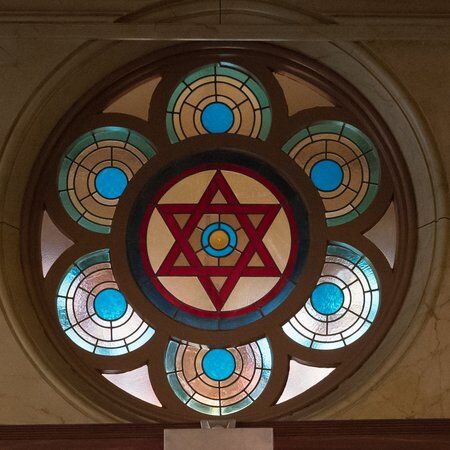
Visiting the Museum at Eldridge Street
Opening Hours and Admission
The Museum is open Sunday through Friday from 10:00 am to 5:00 pm. Admission prices are as follows:
- Adults: $15
- Students & Seniors: $10
- Children (ages 5-17): $8
- ‘Pay What You Wish’ admission is available on Mondays and Fridays.
The Museum offers docent-led tours from Sunday through Friday at various times, with additional weekend tours to accommodate visitors. Those who prefer a self-guided experience can use the Museum’s digital guide on the Bloomberg Connects app, which provides detailed information in several languages. Advanced reservations are recommended to ensure availability.
Accessibility and Visitor Policies
The Museum at Eldridge Street strives to provide an inclusive experience for all visitors. Accessibility accommodations are available throughout the Museum, including a stair-free entrance, accessible restrooms, and elevators to each floor. Guests who require additional assistance are encouraged to contact the Museum ahead of their visit to arrange suitable accommodations, such as touch tours, verbal descriptions, and assistive listening devices for guided experiences. The Museum offers complimentary admission for personal care attendants accompanying visitors with disabilities.
Directions and Parking
Visitors can access the Museum through several convenient transportation options:
- Bus: Take the M15 to Grand and Allen Streets, followed by a short walk to the Museum.
- Subway: The closest stations include East Broadway (F train) and Canal Street (6, N, Q, R, J, or Z trains).
For those driving, street parking is available, along with nearby garages at Forsyth Street, Division Street, and Allen Street. School and tour buses may drop off visitors in front of the synagogue and park along the Manhattan Bridge on Forsyth Street.
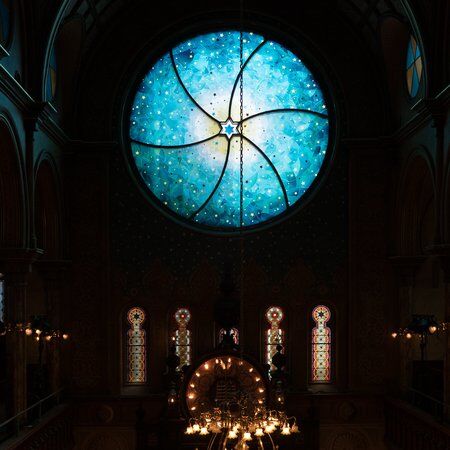
Explore Beyond the Museum at Eldridge Street with CityDays
If you want to delve deeper into New York City's rich history and hidden gems, why not embark on a CityDays Scavenger Hunt?
These scavenger hunts cover the history of their respective areas whilst un-covering incredible landmarks along the way, which we think you’ll enjoy!
Scavenger Hunt tours are a great way to bring family and friends—or even dates and colleagues—together for an afternoon of great fun and adventure, solving clues and snapping photos. Clues will lead you to the big sights and those that you'd walk straight past.
For more information about our New York Hunts then click here: NYC Scavenger & Treasure Hunts | CityDays.
